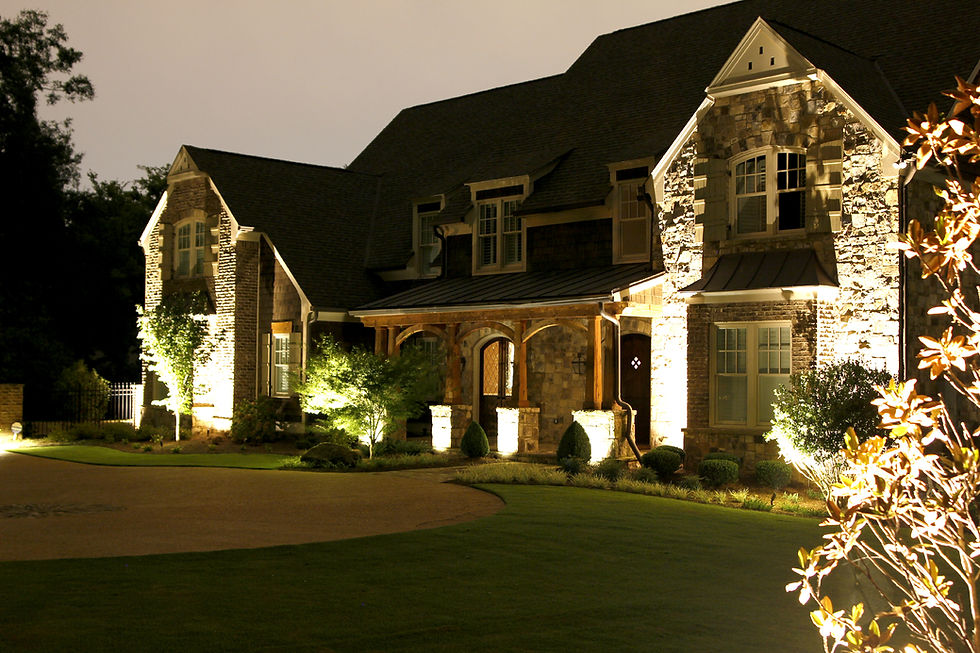What to Know About Proper Yard Drainage
- Atlanta Pro Landscaping
- Aug 28, 2024
- 3 min read
Beneath your lush green lawn is a network of channels that work to ensure proper drainage. Without it, your yard could quickly turn from a vibrant, green oasis into a not-so-nice, soggy mess that spells trouble for your home and property.

Why drainage is crucial
Proper drainage plays a vital role for several important reasons:
Prevents foundation damage
When excess water pools around your house, it can slowly seep into the foundation. Over time, this can cause cracks and leaks, leading to serious structural issues that can be expensive to fix.
Promotes healthy plants
Standing water doesn’t just look bad; it harms your plants. When water doesn’t drain properly, it can suffocate plant roots and create the perfect environment for fungal diseases to thrive.
Maintains property value
A well-drained yard isn’t just nice to look at; it’s also a valuable asset. Proper drainage helps keep your yard functional and attractive, boosting your property’s curb appeal and increasing its resale value.
Factors affecting drainage
Several things can affect how well your yard drains:
Type of soil
The kind of soil in your yard plays a big role in drainage. For example, clay soil tends to hold onto water much more than sandy soil. This means that if you have clay soil, you might need to take extra steps to help with drainage.
Land slope
The slope or angle of your property is another important factor. If your yard naturally slopes away from your home, it will help water drain better and prevent pooling. However, if your yard is flat or slopes toward your home, you may need to create better drainage solutions.
Rainfall amount
How much rain your area gets each year also impacts drainage. In places with a lot of rainfall, you might need more advanced or larger drainage systems to handle all the water.
Trees and shrubs
The plants and trees in your yard can also affect drainage. Tree roots, in particular, can grow into and block drainage pipes, causing problems. When planning your drainage system, it’s important to think about the trees and shrubs you already have.
How to know that your yard has bad drainage
If you see any of these signs, it could mean that your yard isn’t draining water properly:
Water puddles
After it rains, do you notice that water stays in certain spots for a long time? If you have puddles that hang around for hours or even days, it’s a sign that your yard isn’t draining well.
Brown or thin patches of grass
When your grass isn’t getting enough oxygen because of too much water, it can start to turn brown or look thin and patchy. This is another sign that your yard might have drainage problems.
Basement leaks
If water from your yard isn’t draining away properly, it can end up seeping into your basement. This can cause leaks, dampness, and other moisture-related issues in your home.
Mosquito infestation
Stagnant water that doesn’t drain away can attract mosquitoes, which like to breed in these still, wet areas. If you notice more mosquitoes around, poor drainage could be the cause.
How to prevent drainage problems
Gutter maintenance
Keeping your gutters clean and free of leaves, twigs, and other debris is really important. When gutters are clear, they allow water to drain off your roof properly.
Fix damages quickly
Regularly inspect pipes for leaks or damage that could lead to drainage issues and fix them quickly.
Proper landscaping
Ensure the ground slopes away from your home to direct water flow away from the foundation.
Install French drains
A French drain is a simple but effective way to collect water and then redirect it away from areas where water tends to pool or cause problems.
Protect your home from water damage with pro drainage solutions
Taking steps now to ensure your yard drains properly can save you a lot of time, money, and headaches later. However, correcting your yard’s drainage issues requires expertise.
We’ll thoroughly assess your yard and create a custom plan to keep everything dry and in great shape. Get a quote today!




